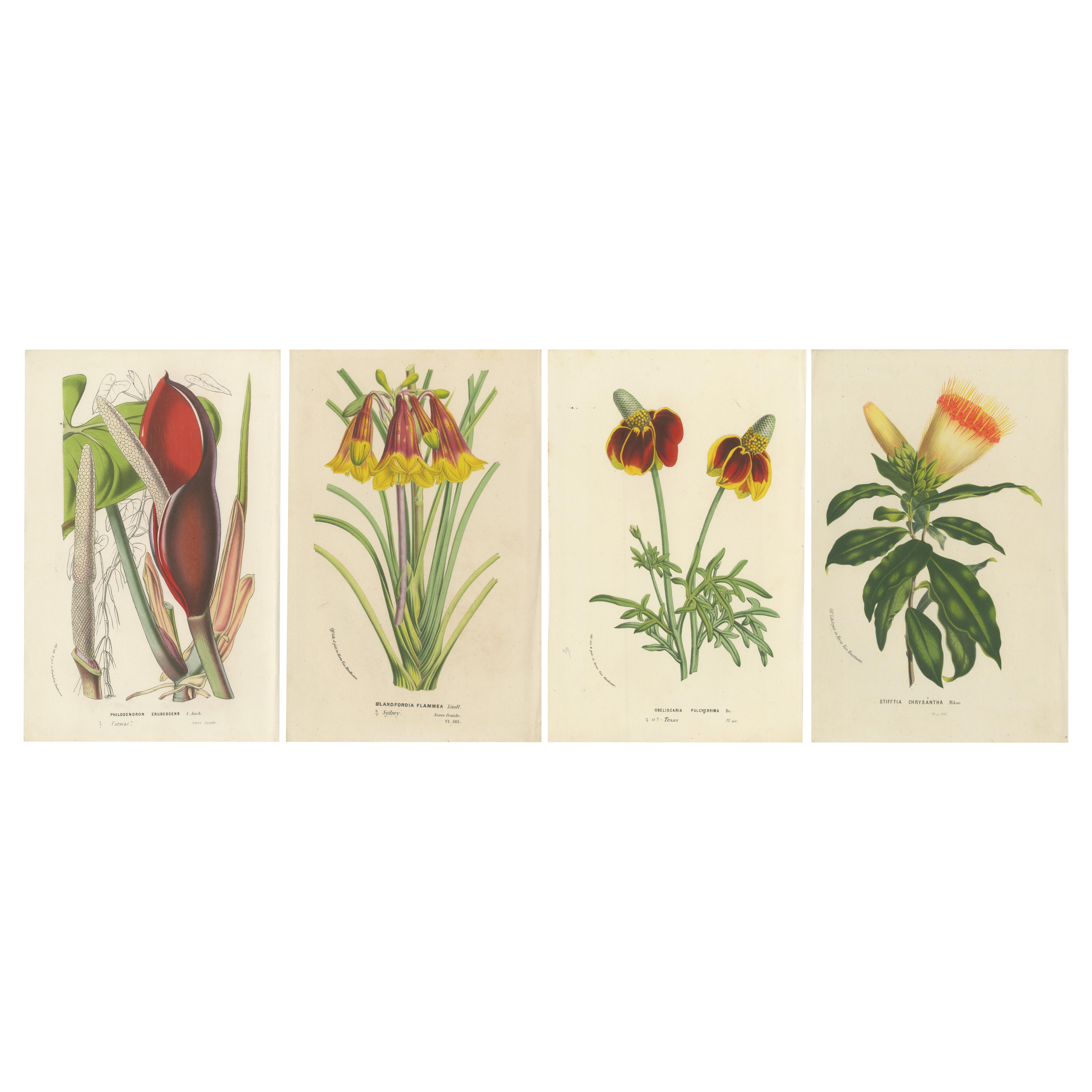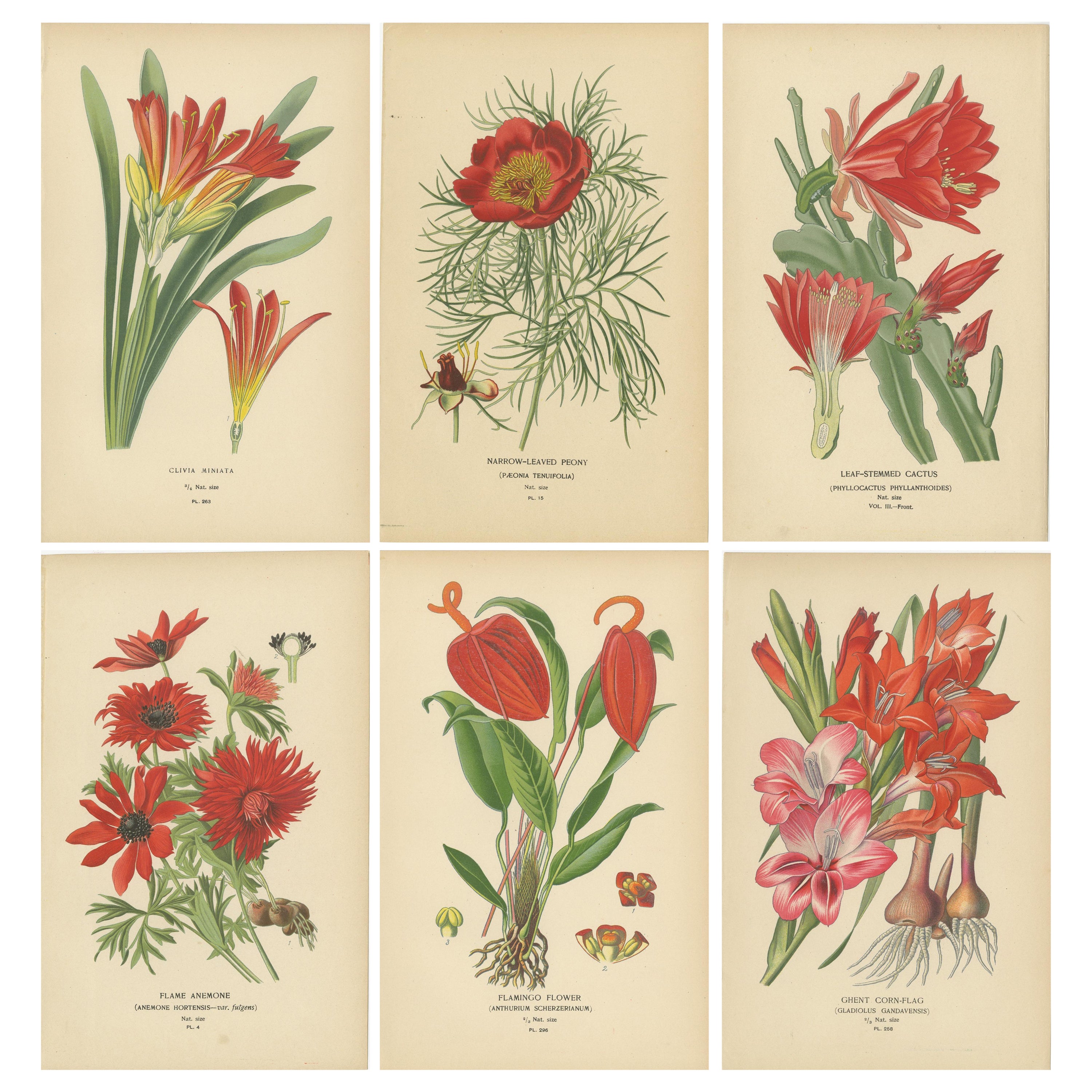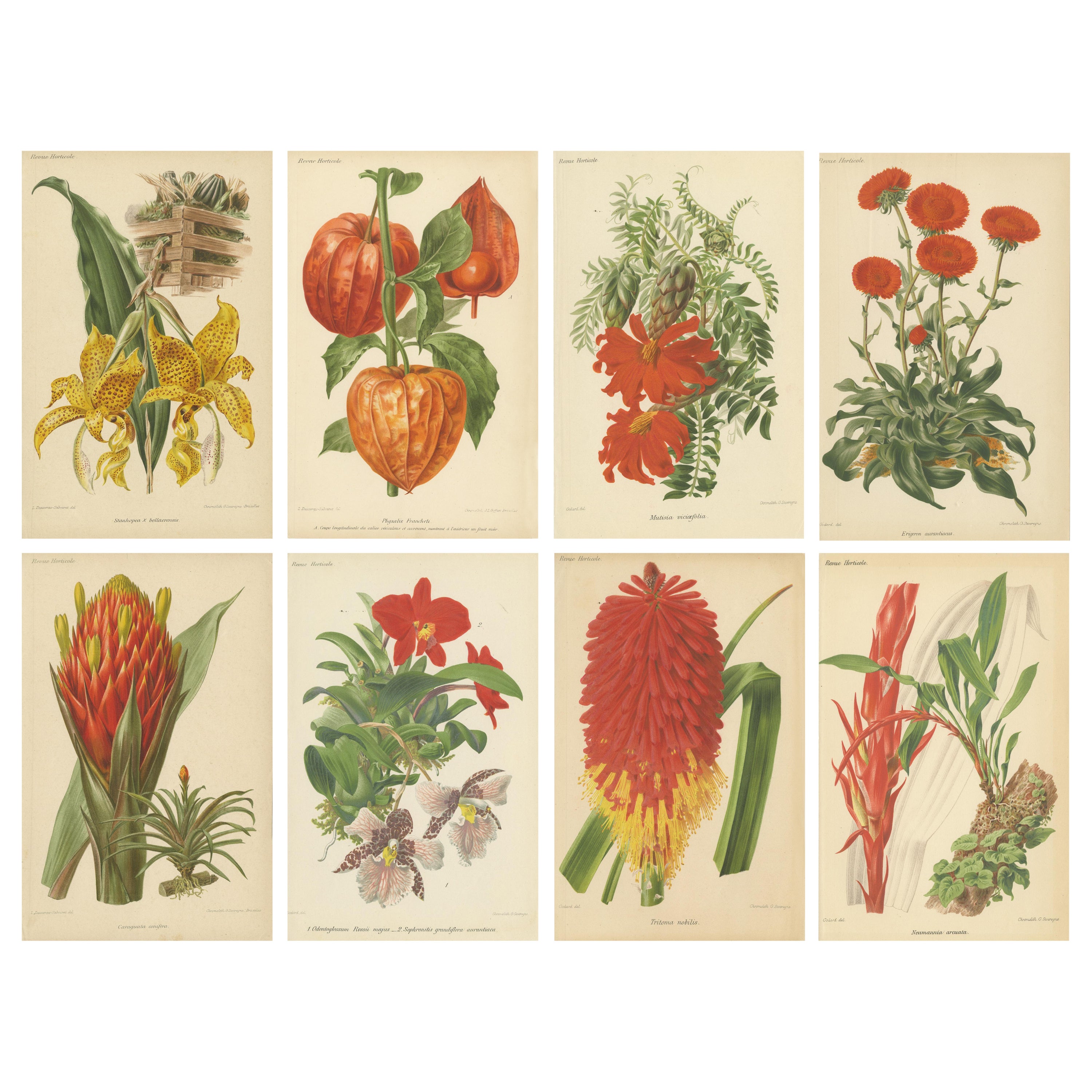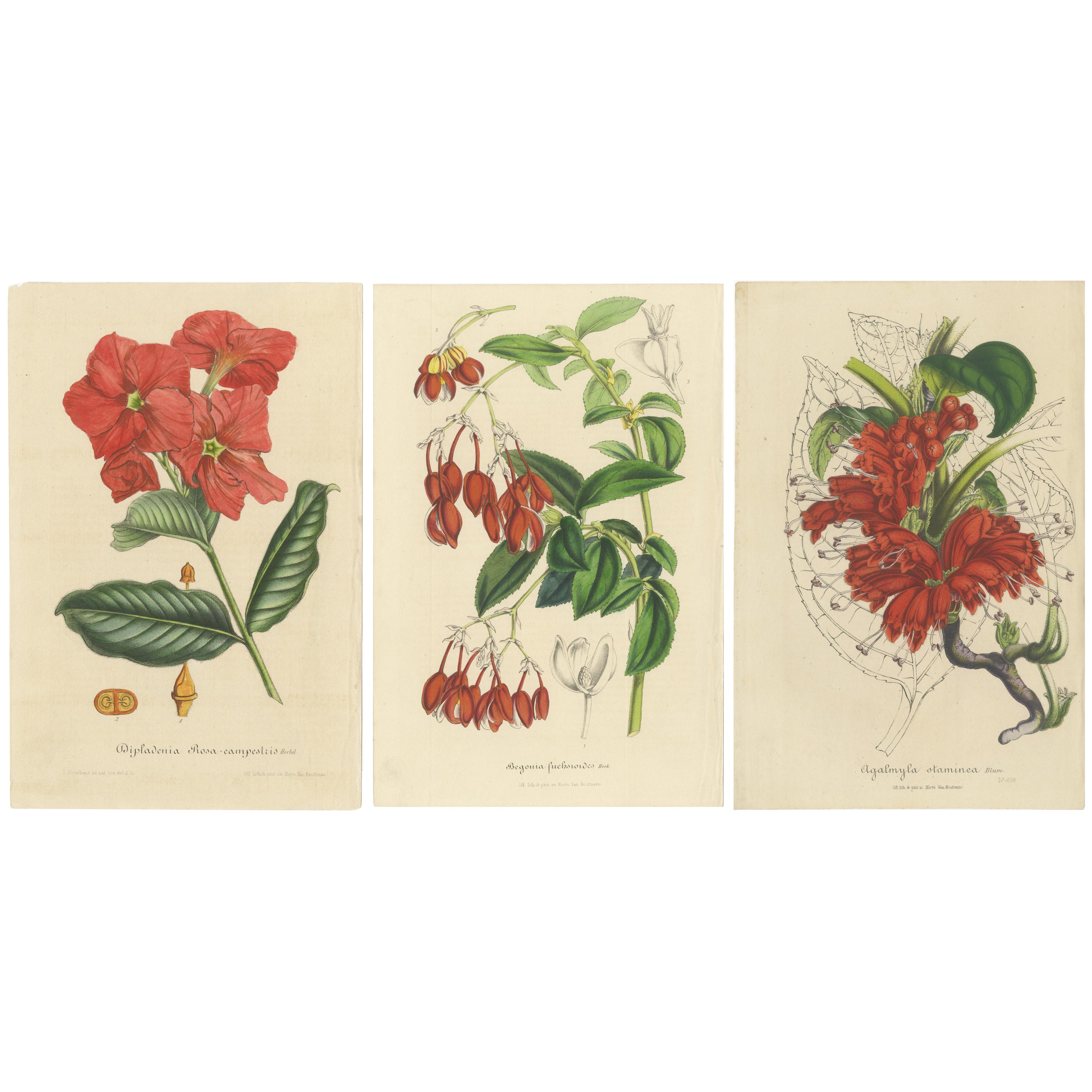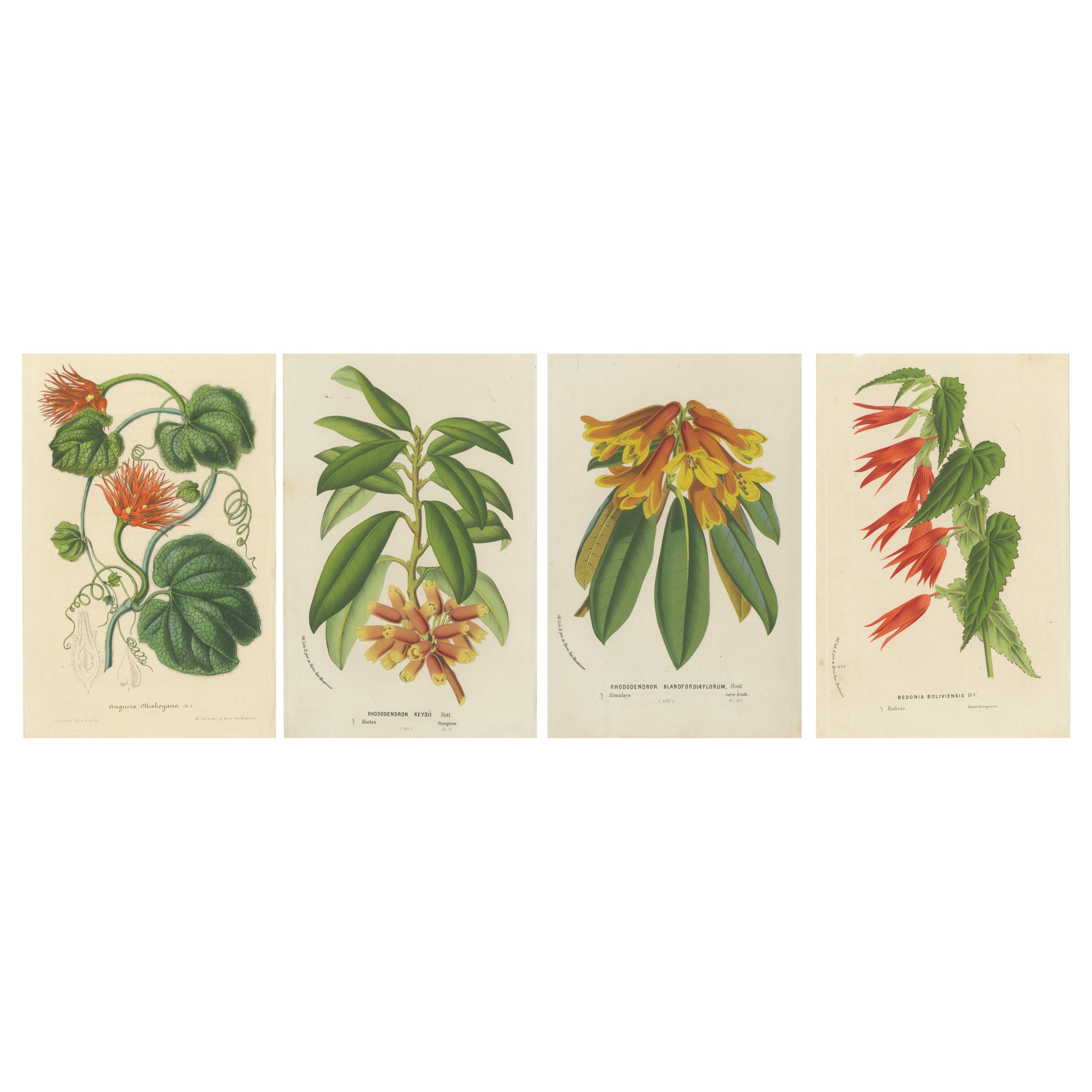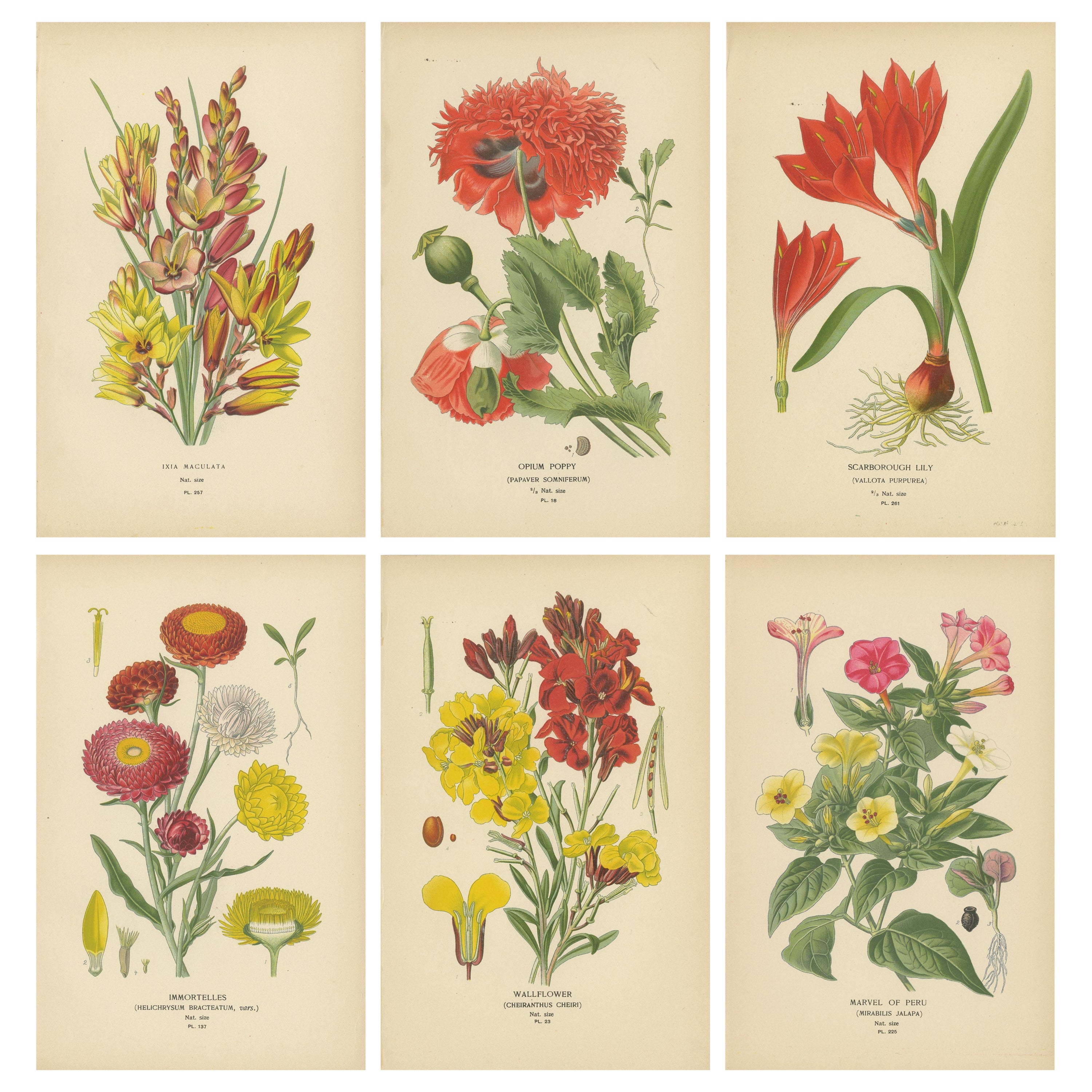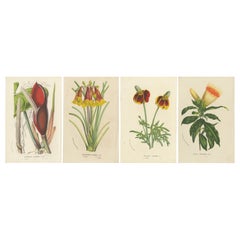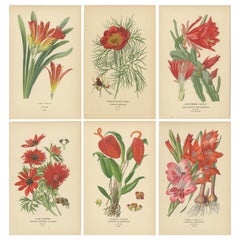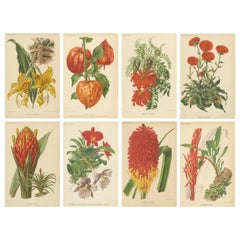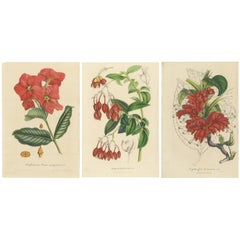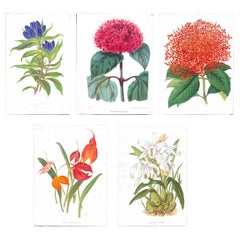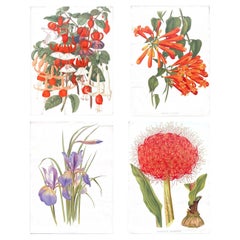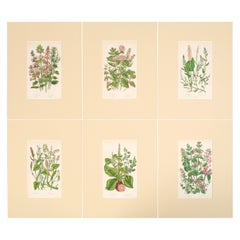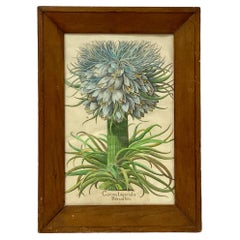Items Similar to Vibrant Botanical Portraits: Exquisite Plant Illustrations from the 19th Century
Want more images or videos?
Request additional images or videos from the seller
1 of 6
Vibrant Botanical Portraits: Exquisite Plant Illustrations from the 19th Century
$364.24per set
$455.29per set20% Off
£271.15per set
£338.94per set20% Off
€304per set
€380per set20% Off
CA$498.91per set
CA$623.64per set20% Off
A$554.90per set
A$693.62per set20% Off
CHF 289.75per set
CHF 362.19per set20% Off
MX$6,752.53per set
MX$8,440.66per set20% Off
NOK 3,700.56per set
NOK 4,625.70per set20% Off
SEK 3,470.47per set
SEK 4,338.09per set20% Off
DKK 2,314.25per set
DKK 2,892.81per set20% Off
Shipping
Retrieving quote...The 1stDibs Promise:
Authenticity Guarantee,
Money-Back Guarantee,
24-Hour Cancellation
About the Item
These illustrations, executed with precision and rich coloration, are fine examples of chromolithography, a technique popular in the 19th century for its ability to produce vivid, multi-colored images. Here's a detailed description of each print, along with their Latin and common English names, and insights into their unique characteristics and the artist behind them:
1. Rhododendron Retsuum
- **Latin Name:** Rhododendron retusum
- **English Name:** None widely recognized; it falls under the broader category of Rhododendrons.
- **Description and Interest:** This print showcases the striking beauty of Rhododendron retusum, with its lush, deep green foliage and vibrant orange flowers. Rhododendrons are known for their spectacular flowers and significant variety, making them a cornerstone in ornamental horticulture.
2. Aphelandra Porteana
- **Latin Name:** Aphelandra porteana
- **English Name:** Portea Flower
- **Description and Interest:** The Aphelandra porteana is distinguished by its bold, orange-bracted spikes and dark green leaves with white veins. This plant is noted for its distinctive bracts and is a popular choice for tropical garden settings.
3. Cyrtanthus Obliguus
- **Latin Name:** Cyrtanthus obliquus
- **English Name:** Oblique Cyrtanthus
- **Description and Interest:** Known for its tubular, pendulous flowers that display a gradient of yellow to red, this plant is intriguing for its unusual, striking appearance and resilience in dry environments.
4. Mutisia Decurrens
- **Latin Name:** Mutisia decurrens
- **English Name:** Decurrent Mutisia
- **Description and Interest:** Featuring daisy-like orange flowers with a long, recurving coil, this plant is a climber, known for its unique floral structure and the ability to thrive in the Andean regions, adding to its exotic allure.
Maker and Technique
- **Artist:** The chromolithographs were typically created by skilled artists and technicians during the 19th century, with these possibly being the work of a renowned illustrator from that era, though the specific artist isn’t mentioned here.
- **Technique:** Chromolithography was the technique used, which involves layering colors through multiple lithographic stones or plates to achieve rich, detailed, and accurate renderings of the original artwork. Each color layer is meticulously applied and aligned, making chromolithographs highly prized for their depth and vibrancy.
Significance
These prints are not only scientifically valuable for their detailed botanical accuracy but also artistically, as they reflect the high level of craftsmanship of the time. They serve as a historical record of botanical exploration and the popularity of collecting and cataloging plants from around the world, which was a common pursuit during the Victorian era. The fusion of art and science in these works provides insight into the cultural and scientific zeitgeist of the late 19th century.
- Dimensions:Height: 9.65 in (24.5 cm)Width: 6.3 in (16 cm)Depth: 0 in (0.02 mm)
- Sold As:Set of 4
- Materials and Techniques:
- Period:
- Date of Manufacture:Circa 1875
- Condition:Condition: Good, given age. General age-related toning and/or occasional minor defects from handling. Colors are vivid. Please study scan carefully.
- Seller Location:Langweer, NL
- Reference Number:Seller: BG-13761-80, BG-13761-81, etc1stDibs: LU3054341456092
About the Seller
5.0
Recognized Seller
These prestigious sellers are industry leaders and represent the highest echelon for item quality and design.
Platinum Seller
Premium sellers with a 4.7+ rating and 24-hour response times
Established in 2009
1stDibs seller since 2017
2,508 sales on 1stDibs
Typical response time: <1 hour
- ShippingRetrieving quote...Shipping from: Langweer, Netherlands
- Return Policy
Authenticity Guarantee
In the unlikely event there’s an issue with an item’s authenticity, contact us within 1 year for a full refund. DetailsMoney-Back Guarantee
If your item is not as described, is damaged in transit, or does not arrive, contact us within 7 days for a full refund. Details24-Hour Cancellation
You have a 24-hour grace period in which to reconsider your purchase, with no questions asked.Vetted Professional Sellers
Our world-class sellers must adhere to strict standards for service and quality, maintaining the integrity of our listings.Price-Match Guarantee
If you find that a seller listed the same item for a lower price elsewhere, we’ll match it.Trusted Global Delivery
Our best-in-class carrier network provides specialized shipping options worldwide, including custom delivery.More From This Seller
View AllFlora Illustrated: A Collection of 19th Century Botanical Art, Published c.1875
Located in Langweer, NL
The prints depict various botanical species, each illustrated with detailed attention to the morphology of the plants, including leaves, flowers, and sometimes fruits or seeds. These...
Category
Antique 1870s Prints
Materials
Paper
$325 Sale Price / set
20% Off
Botanical Illustrations from the Victorian Era: A Visual Celebration of Flora
Located in Langweer, NL
These are vibrant chromolithographs from "Favourite Flowers of Garden and Greenhouse" by Edward Step, illustrated by Désiré Bois and published in 1896 by Frederick Warne & Co., Londo...
Category
Antique 1870s Prints
Materials
Paper
$469 Sale Price / set
20% Off
Original Vintage Botanical Illustrations from Revue Horticole, circa 1855
Located in Langweer, NL
Here are descriptions of the eight botanical illustrations, including the Latin and English names of the plants, why they are significant, and details about the creators and the tech...
Category
Antique 1850s Prints
Materials
Paper
$642 Sale Price / set
20% Off
Exquisite Botanical Illustrations from Curtis’s Botanical Magazine (1847)
Located in Langweer, NL
These beautiful hand-colored botanical illustrations, drawn and lithographed by the renowned artist Walter Hood Fitch, were featured in Sir William Jackson Hooker's *"Curtis's Botanical Magazine,"* published in London in 1847. Fitch was one of the most prolific and skilled botanical illustrators of the 19th century, known for his ability to capture the intricate details and vibrant hues of the plants he depicted.
Sir William Jackson Hooker, a famous British botanist and the director of the Royal Botanic Gardens, Kew, commissioned these illustrations as part of his work to document newly discovered plants from around the world. The *Curtis’s Botanical Magazine* has been published since 1787 and remains one of the longest-running botanical periodicals.
Detailed Descriptions of Each Plant
#### 1. **Dipladenia Rosa-campestris** (*Hortul. ex Veitch*)
- **English Name**: Rose Dipladenia
- **Description**: This illustration showcases *Dipladenia rosa-campestris*, a striking flowering plant known for its showy pink to deep red trumpet-shaped flowers. Native to tropical regions of South America, particularly Brazil, *Dipladenia* belongs to the family Apocynaceae and is prized in horticulture for its vibrant blooms and ability to climb. Fitch's illustration emphasizes the waxy leaves and the vivid color of the petals, bringing the plant to life on the page.
#### 2. **Begonia fuchsioides** (*Hook.*)
- **English Name**: Fuchsia-flowered Begonia
- **Description**: The *Begonia fuchsioides* is depicted with its characteristic red, pendulous flowers, which closely resemble the blooms of fuchsia plants. This species of Begonia is native to tropical regions and is popular for its delicate, bell-shaped flowers and glossy leaves. Fitch’s attention to the arrangement of the leaves and the contrast between the flowers' vibrant red and the soft green leaves provides a lifelike representation of this exotic plant.
#### 3. **Agalmyla staminea** (*Blume*)
- **English Name**: Staminate Agalmyla
- **Description**: This illustration captures the unique red tubular flowers of *Agalmyla staminea*, a plant native to Southeast Asia. The species is part of the Gesneriaceae family and is known for its bright, showy flowers that grow in dense clusters. Fitch’s careful rendering of the plant’s leaves and the intricate veining, along with the vibrant red flowers, highlights his talent for bringing the botanical subject to life with both scientific accuracy and artistic flair.
### About the Makers
#### **Walter Hood Fitch** (Artist and Lithographer)
Walter Hood Fitch (1817–1892) was one of the most influential botanical artists of the 19th century, working primarily with Sir William Hooker and later his son, Joseph Dalton Hooker, at Kew Gardens. He produced thousands of illustrations for various botanical publications, including *Curtis’s Botanical Magazine*, where he was responsible for the majority of its plates from 1834 to 1877. Fitch’s mastery of lithography allowed him to create richly detailed and accurate depictions of plants, with a particular talent for illustrating both the botanical structure and the vibrant colors of flowers.
#### **Sir William Jackson Hooker** (Director and Editor)
Sir William Jackson Hooker (1785–1865) was a prominent British botanist and the director of the Royal Botanic Gardens, Kew. Under his leadership, Kew Gardens expanded its collection of plants from around the world, and Hooker was instrumental in promoting the scientific study and illustration of these species. As the editor of *Curtis’s Botanical Magazine*, Hooker collaborated with Fitch to document and share the beauty and diversity of plants with the scientific community and the public.
### The Lithographic Technique
Lithography, particularly chromolithography, was a crucial innovation in botanical illustration. Fitch was skilled in the traditional method of lithography, where an image was drawn onto a stone plate with a greasy substance and then inked for printing. Hand-coloring was often applied afterward to bring the prints to life, as seen in these illustrations. This method allowed for highly detailed, accurate representations of plants and their botanical features, making it invaluable for both scientific study and aesthetic appreciation.
### Conclusion
These prints from *Curtis’s Botanical Magazine* reflect the height of botanical art in the mid-19th century. The combination of Walter Fitch...
Category
Antique 1840s Prints
Materials
Paper
$412 Sale Price / set
20% Off
Lush and Vibrant: A Collection of Exotic Botanical Illustrations, circa 1875
Located in Langweer, NL
The prints depict a selection of exotic plants with a remarkable detail and vibrant color, showcasing the beauty and diversity of botanical life. Each illustration is a testament to ...
Category
Antique 1870s Prints
Materials
Paper
$392 Sale Price / set
20% Off
Floral Treasures: 19th-Century Chromolithographs from the Botanical Collection
Located in Langweer, NL
The following six chromolithographs are part of a collection published in 1896, created by Désiré Bois and Edward Step. They illustrate botanical subjects with remarkable attention t...
Category
Antique 1890s Prints
Materials
Paper
$517 Sale Price / set
20% Off
You May Also Like
Bignonia venusta – Antique Botanical Chromolithograph, 1880s
Located in Fukuoka, JP
A striking original botanical print from the 1880s, featuring Bignonia venusta, also known as flame vine or orange trumpet vine. This brilliantly colored illustration captures the dr...
Category
Antique 19th Century French Prints
Materials
Paper
Original 1880s Botanical Print of Hæmanthus Kalbreyeri — Vibrant Antique Chromol
Located in Fukuoka, JP
A striking original chromolithograph from the 1880s, this botanical print features the dramatic Hæmanthus kalbreyeri, also known as the blood lily. Characterized by its intense red s...
Category
Antique 19th Century French Prints
Materials
Paper
Set of Six English 19th Century Botanical Engravings, England, C.1880
Located in London, GB
A set of six English 19th century Botanical Engravings, England C.1880.
Mounted, ready to be framed.
Fine examples, in excellent condition commensurate of age.
Category
Antique Late 19th Century English Victorian Prints
Materials
Paper
Botanical Print, Corona Imperialis Polvanthus, After Basil Besler
By Basilius Besler
Located in Bradenton, FL
The hand-colored botanical print, Corona Imperialis Polyanthos or Crown Imperial Lily, was originally by Basil Besler (1561-1629) a Nuremberg, Germany pharmacist, and published in t...
Category
20th Century German Baroque Prints
Materials
Paper
Set of 6 Original Antique Botanical Prints, circa 1870
Located in St Annes, Lancashire
Lovely set of 6 botanical prints
Chromo-lithographs
Original color
Published, circa 1870
Unframed.
The measurement given is for one print.
Free shipping
Category
Antique 1870s English Victorian Prints
Materials
Paper
Set of 16 Original Antique Botanical Prints, circa 1850
Located in St Annes, Lancashire
Wonderful set of 16 botanical prints
Lithographs after the original botanical drawings by Hooker.
Original color
Published, circa 1850
Unframed.
The measurement given is for one...
Category
Antique 1850s English Early Victorian Prints
Materials
Paper
More Ways To Browse
Cobalt Blue Porcelain And Bronze Urn
Crab Claw
Crockery Cabinet
Crystal Cat Vintage
Danish 3 Chest Of Drawers
Decorative Crafts Inc Brass
Delft Large Jars
Discus Thrower
Double Pendulum
Dovetail Vinyl Record
Dragon Boat
Drexel Chinoiserie
Drexel Precedent
E Drouot
Edward Wormley Precedent
Egyptian Cat
Embossed Copper Box
English Bow Front Chest
